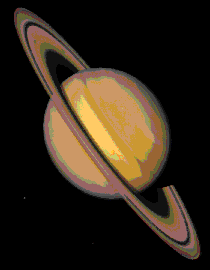This is an image of Saturn.
Click on image for full size
NASA/JPL
An Overview of the Evolution of Saturn's Atmosphere
The giant planets have definitely changed since their
formation. But how much remains to be seen.
Most of the original air of the giant planets remains in place. (The earth-like planets lost most of their atmospheres very soon after they formed because the atmosphere drifted away).
Saturn is made primarily of the basic materials hydrogen and helium, which is what existed near Saturn when it was forming.
You might also be interested in:
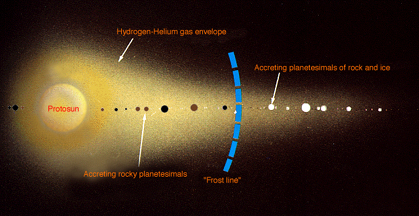
The position of the planets in the solar nebula greatly affected their 1. size and 2. composition. This is because of the effect of how cold it was in the nebula. 1. The nebula was a lot warmer close to
...more
The dramatic appearance of Saturn stems mainly from the spectacular rings. The atmosphere looks much less dramatic. The clouds of Saturn are much less colorful than those of Jupiter. This is because the
...more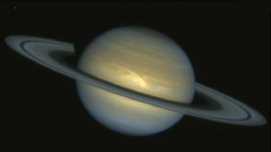
The most important motions in the atmosphere are winds. The major winds in Saturn's atmosphere are the zonal winds which are made of zones and belts. Zones are high pressure systems and belts are low pressure
...more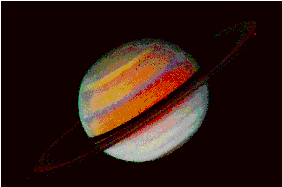
The striped cloud bands on Saturn, like Jupiter, are divided into belts and zones. In a belt, the wind flows very strongly in one direction only. In a zone, the wind flows very strongly in exactly the
...more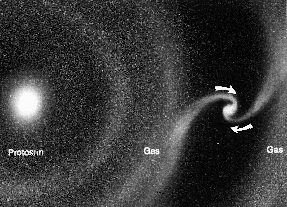
As shown in this picture, while they were forming in the solar nebula, the nucleii of the planets-to-be (called protoplanets) drew material to themselves from the cloud of gas and dust around them. The
...more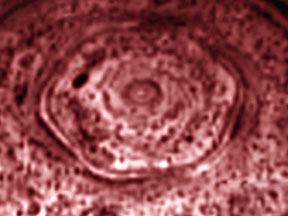
Astronomers have discovered a strange shape in Saturn's atmosphere. The shape is a hexagon. The hexagon is near Saturn's North Pole. Scientists aren't quite sure why Saturn has the hexagon shape in its
...more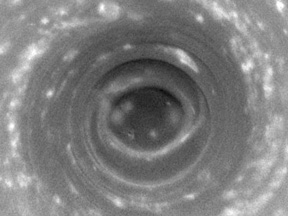
Saturn's South Pole is very stormy. It is also surprisingly warm. A huge, hurricane-like storm is centered on the South Pole. Astronomers recently discovered that the pole is also warmer than any other
...more


